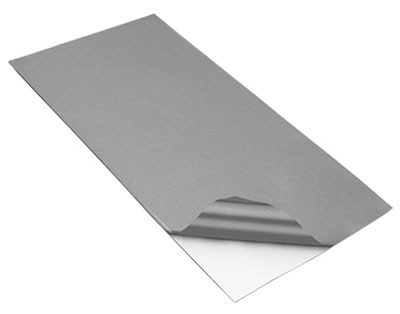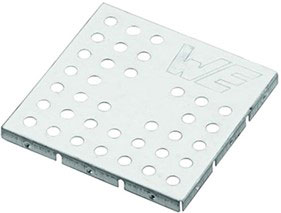从源头上根除 EMI
直接针对低噪音电子应用进行设计,其成本远低于在电磁兼容性 (EMC) 测试失败后再被动地消除有害电磁干扰 (EMI) 所需的费用。
据广泛估计,多达 50% 的应用在首次 EMC 测试时都无法通过。重复测试费用、电路板改版、实验室占用时间以及项目延期等成本,再加上制造与分销延误的损失,极容易累计高达 10,000 美元甚至更多。电磁兼容 (EMC) 的最优解决方案应永远诞生在首个原型之前,这是一条值得遵循的经验法则。
为了减少不确定性和猜测,设计人员可以从精心策划的单一 EMC 产品线,如 Würth Elektronik 提供的产品中选择组件。该公司可提供由 5,000 多种 EMC 组件构成的全面产品组合,其中包括铁氧体、电感器、电容器、吸收器、屏蔽材料等,所有组件均经过精心设计和全面测试,能够很好地协同工作。
随着对小型化的需求不断增长,EMC 日益成为一个问题。例如,物联网传感器节点在智慧家居、工业、医疗和农业环境中越来越常见,但容易受到电磁干扰。
物联网传感器依赖于小型印刷电路板、密集布局、开关电源、微控制器和集成无线电,这实际上就注定了潜在的噪音问题。在一块小小的电路板中,可能包含 DC/DC 转换器、天线和高速信号——所有这些都会相互竞争,破坏信号完整性。
精心设计的 EMI 解决方案,例如 Würth 的 WE-EMIP 贴片和匹配铁氧体阵列可以通过减少发射、保持信号完整性以及实现更顺畅的合规路径,可以帮助我们理顺潜在的混乱状态。
设计指南
设想一个通过低功耗蓝牙 (BLE) 无线电传输数据的环境传感器。开关稳压器选择不当可能会辐射噪声。BLE 天线对干扰很敏感,并且数字通信线路可以通过电源轨发射 EMI。
以下是如何在 EMC 就绪设计中使用 Würth 组件的简明指南:
- Würth 的 WE-CBF 片状铁氧体可以与电源线串联——通常位于降压稳压器的输入和输出端,以衰减高频开关噪声。这有助于抑制传导 EMI,保持洁净的电源轨并限制由 PCB 印制线或电缆产生的发射干扰。
- 去耦电容器和大容量电容器可以与铁氧体配对,以平滑 VCC 上的瞬态并减少纹波。Würth Elektronik 的 860040573003 铝电解电容器旨在抑制 EMI 和射频干扰 (RFI)。在要求线路滤波性能可靠的电源、家用电器、智能电表和物联网设备中,这种电容器能够稳定运行。
- 371001 WE-EMIP EMI 贴片式吸收器(图 1)可直接位于诸如开关稳压器或 BLE 片上系统 (SoC) 模块等会产生噪声的组件上方或附近,以吸收辐射 EMI,并将天线和敏感电路与局部干扰隔离。
 图 1:Würth 的 WE-EMIP 贴片器件提供了一种易用方法来隔离敏感元件与 EMI。(图片来源:Würth Elektronik)
图 1:Würth 的 WE-EMIP 贴片器件提供了一种易用方法来隔离敏感元件与 EMI。(图片来源:Würth Elektronik)
- 像 WE-CMB HC 系列 74482210002 之类的共模扼流圈可以抑制 AC 电源输入的噪声,用于防止智慧家居设备干扰电网,或者确保为存在电气噪声的工业环境提供洁净电源。
- EMI 敏感组件,例如 MCU、SoC、无线模块和时钟振荡器等可以使用 14.12 mm x 14.12 mm x 2.00 mm 表面贴装镀锡钢盖进行屏蔽,例如 WE-SHC 系列 3600213120S(图 2),适用于紧凑型嵌入式应用。
 图 2:Würth 的 WE-SHC 系列 3600213120S 采用紧凑型表面贴装外壳,用于屏蔽 EMI 敏感元件。(图片来源:Würth Elektronik)
图 2:Würth 的 WE-SHC 系列 3600213120S 采用紧凑型表面贴装外壳,用于屏蔽 EMI 敏感元件。(图片来源:Würth Elektronik)
Würth Elektronik 的一系列电路保护压敏电阻可防止雷击或 ESD 事件引起的电压瞬变。设计人员还可以利用 Würth 的滤波扼流电感器来抑制差模。另外,还提供滤波器设计套件,其中包含精选的无源元件,例如铁氧体、扼流圈和电容器。这些器件都是针对各种用例的 EMI 抑制而定制的,为设计人员提供了可实操的方法,进行原型设计并评估 EMC 解决方案。
该公司还提供可简化紧凑型互联环境传感器开发的补充组件。具体包括用于蜂窝物联网、Wi-Fi 和蓝牙连接的预认证无线电模块,以及基于 MEMS 的温度和湿度传感器,这些器件以小尺寸实现了可靠的低功耗数据采集。
结语
Würth Elektronik 的组件构成了一套综合工具包,用于构建符合现代物联网和电子系统需求的性能强大且符合 EMC 标准的应用。这些组件克服了 EMI 抑制和电压瞬变保护等关键难题,同时提高了紧凑型互联环境传感器的可靠性和性能。该公司丰富的 EMC 目录和设计套件为设计人员提供了精心筹划的一站式服务,以满足他们的各种需求。

Have questions or comments? Continue the conversation on TechForum, Digi-Key's online community and technical resource.
Visit TechForum










